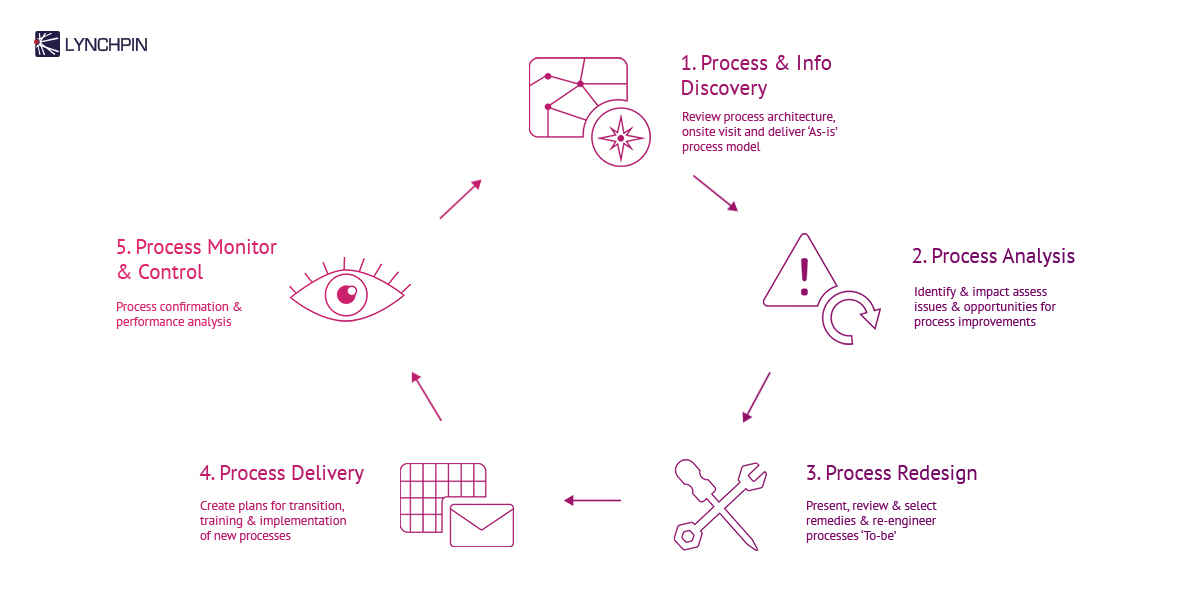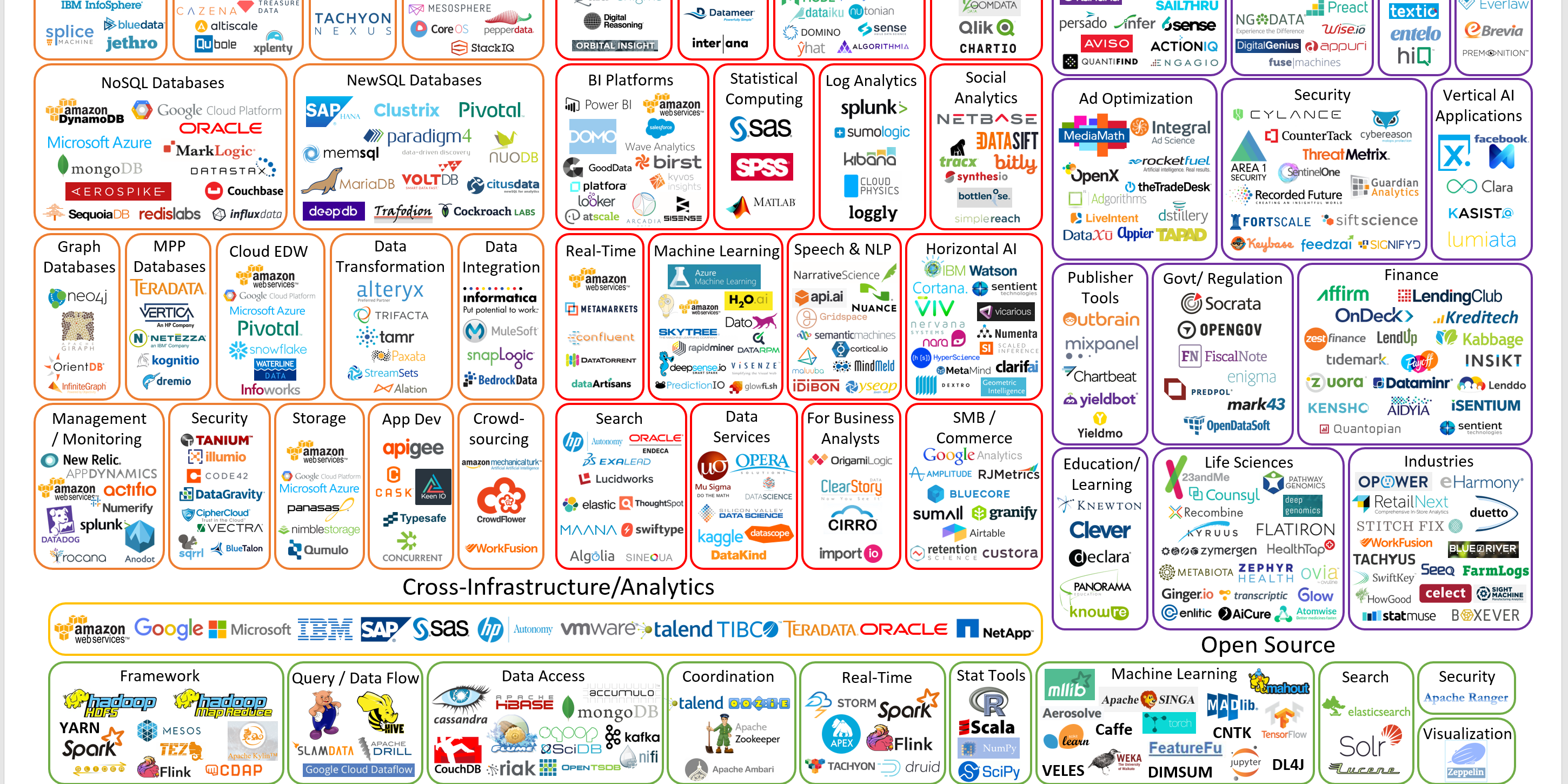Here at Lynchpin we take great pride in enabling our clients to be more effective in how they use data.
Often, companies find that realising the value in their data can require a complex business transformation. A process redesign strategy may be the key to enabling and unlocking those data capabilities.
Our approach to process redesign can be stand alone or can work in tandem with other service delivery. We work closely with our clients to help uncover the key improvements and automation required to accelerate the technical capabilities and to enable insight and data driven decisions advancing along the chosen strategy and roadmap.
Although each requirement is unique, we typically follow a 5-step model:

The most critical stage is at the starting point – step 1. The insight we collect will drive the solution. So, the key is to understand the barriers, the red tape and the ‘oh we don’t have access to that data’, even though the data is usually owned by the organisation, its just kept in a fortress that no one can access!
Discovery typically involves looking under the hood to review the (data) architecture. How does the engine holding all the processes, procedures, technical infrastructure, reporting lines and analytics all fit together? Be it through interview, evidence and workshop-based discovery sessions. Even a simple questionnaire. Like a sponge we will soak up every ounce of all the details! No stone is left unturned.
Process analysis will work towards mashing all the learnings together and uncovering the processes that just don’t deliver or ‘cut the mustard’ in utilising data to its best effect. We uncover the gaps, the disconnects and the pesky route causes which hinder and underutilise data. In many cases the root causes may already be suspected or may be clear to all involved but the solutions have not yet been uncovered or are feared as out of reach.
A key step is to assess potential remedies, options and opportunities for redesign and resolve. There may be too many to action and we usually find this is the case – for example , you can whittle them down through a scorecard assessment. What impact will a change in direction have? Will it deliver measurable value against the strategy and key objectives? Is the resolve achievable – in terms of ‘is there a cat in hells chance of actually achieving a solution’! There is nothing worse than coming up with a solution which is clearly a non-fit against the current technology and the ‘oh you will need to reinvest and redesign your whole tech stack’!
Next up is to select the processes to redesign. Redeveloping the new blueprints, workflows, roles and responsibilities and reengineering the processes with the data and automation element ‘top of mind’. Giving the client the capability to utilise what has previously been untouched or out of reach.
One recent challenge was to assess and develop a new reporting structure for a marketing department and various stakeholders around the organisation. All of whom had different needs and reporting requirements. Our solution provides real time, actionable insight through the development of a central reporting dashboard. Fully automated, personalised and delivered directly with the bells and whistles to pinpoint the areas that require attention. Reducing time and enabling instant optimisation thus saving costs on ineffective marketing activity.
Integral to the success of any process redesign are the ‘people’. Those who will integrate with the new processes and improved ways of working day in and day out and those who will need to embrace the change. Often it is useful to allocate internal process owners. Superstars and internal ambassadors who will utilise their expert knowledge within the business and own the development and delivery of the improved operations.
Building the knowledge for effective change is also a must. Next, it’s crucial to assist in the development of an effective communication programme incorporating the training requirements and competencies essential for delivering the enhanced processes and data capabilities.
Introducing any change to a data driven analytics strategy will impact an organisation in a number of far reaching ways. Our approach to process redesign ensures we provide a unique service which is tailored towards your requirements and is achievable and measurable in delivering against your defined factors of success.
About the author
Lynchpin
Lynchpin integrates data science, engineering and strategy capabilities to solve our clients’ analytics challenges. By bringing together complementary expertise we help improve long term analytics maturity while delivering practical results in areas such as multichannel measurement, customer segmentation, forecasting, pricing optimisation, attribution and personalisation.
Our services span the full data lifecycle from technology architecture and integration through to advanced analytics and machine learning to drive effective decisions.
We customise our approach to address each client’s unique situation and requirements, extending and complementing their internal capabilities. Our practical experience enables us to effectively bridge the gaps between commercial, analytical, legal and technical teams. The result is a flexible partnership anchored to clear and valuable outcomes for our clients.



